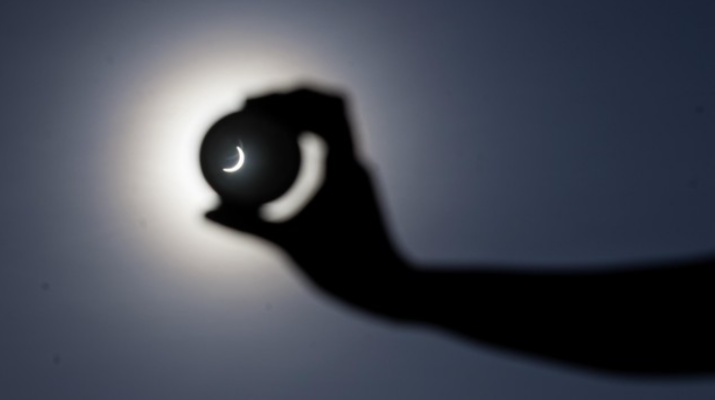ENTRE News – Starting from planets to stars, observers can see a number of celestial objects during the Total Solar Eclipse on April 8. Observers who are or are close to the path of the Total Solar Eclipse (path of totality) will be able to see the appearance of the Moon’s shadow projected into the Earth’s atmosphere, and darkness during the day.
A few minutes before the start of the total eclipse, a striking shadow will appear, like an approaching storm, moving from the west-southwest sky. The darkness that will follow gives observers the opportunity to see stars, planets, and perhaps other bright objects in the daytime sky. And this is what the exotic colors and lighting are all about. Astronomy writer Guy Ottewell explains that the moment of totality is a moment when the visual cannot be described clearly.
“During the minutes of totality, I was aware of being in a different visual world; trying to memorize colors that I didn’t know the name of, which were as difficult to remember or describe as taste,” he said, quoted from LiveScience.
In total phase, the shadow of the Moon above appears blackish blue and the light from outside the edge forms a bright line around the horizon. The saffron color outside the eclipse shadow is impressive. Because air scatters light with long wavelengths less than short ones, light from outside the image becomes yellowed or reddened, the exact color depending on the distance from the edge of the image to the observer.
At a distance of 50 miles or more, the reddish glow is clearly visible and the brownish yellow glow is low. During the upcoming eclipse, observers could be as far as 50 to 60 miles (80 to 100 kilometers) from the edge of the shadow.
To view all these events safely, observers must use solar filters or solar eclipse glasses while cameras, telescopes, and binoculars require solar filters placed in front of their lenses.
Only observers in the path of totality are able to remove the solar filter for a short time to see the crown of the Sun with the naked eye. Meanwhile, observers who are not in the path of totality must use solar filters throughout the eclipse.
Beyond the path of totality or even at considerable distances, the Moon’s shadow can sometimes be seen projected into the atmosphere. This is because the smaller the distance from the path of totality, the greater the chance of seeing the shadow. One way to see the image can be using a fisheye lens or wide-angle convex mirror, or photometric measurements with a photoelectric meter.
Stars and planets
When the Sun experiences a total eclipse, the sky does not appear as dark as a moonlit night. On the other hand, it gets dark around 20-40 minutes before sunrise or 20-40 minutes after sunset. In such a sky, the planet Venus is usually very conspicuous.
Venus is by far the brightest object at a visual magnitude of -3.9 (in astronomy, the smaller the magnitude, the brighter the object). On the day of the eclipse, its position will be about 15 degrees to the west of the Sun. Jupiter, whose brightness is after Venus with a magnitude of -2.0, will be located 30 degrees east of the sun. Saturn with magnitude +1.1 and Mars with magnitude +1.2 will be 35 and 36 degrees west of the sun, respectively.
The star Capella with magnitude +0.1 will appear high in the northeast, while Rigel FOR4D with magnitude +0.2 will appear lower in the southeast.
